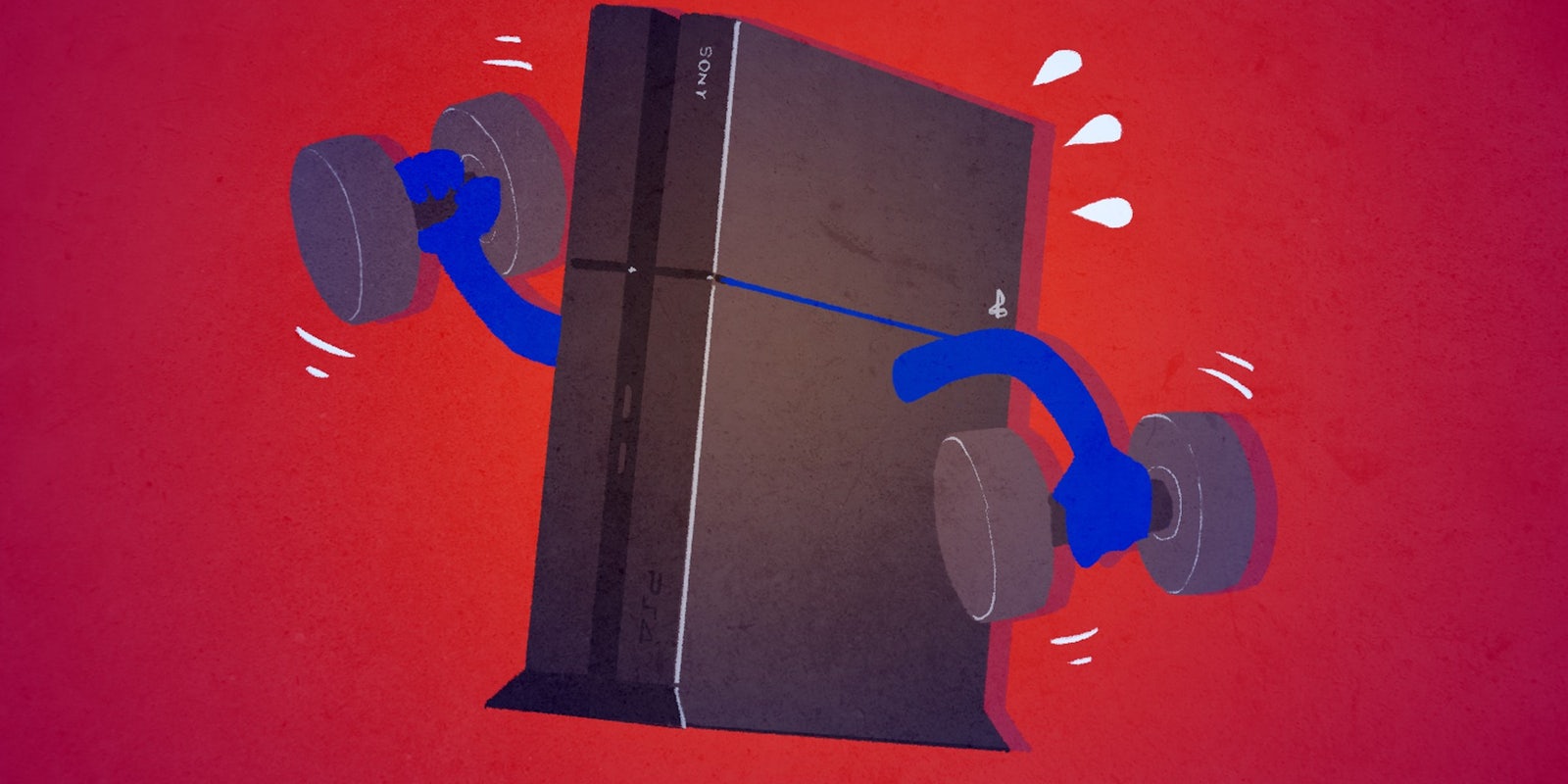The new, upgraded PlayStation 4 console that pundits have been calling “PlayStation 4.5” appears to be real. Now you just have to decide what it means for you and your wallet.
Game enthusiast site Giant Bomb has reportedly been given access to documents that spell out the hardware configuration for a new iteration of the PlayStation 4, which Sony has reportedly code named NEO, and a prospective asking price of $400.
The news comes after Eurogamer reported in March that it had independently confirmed the existence of the PS 4.5 via unnamed inside sources. The site revealed today it also has copies of the documents discussed by Giant Bomb. Rumors about the console update heated up early last month after Kotaku overheard developers discussing it at the annual Game Developers Conference.
And so it seems the expensive days of the upgradable video game console are truly upon us. And the first question to ask is whether or not the reported hardware upgrades in PS 4.5 actually matter to you in a practical sense.
Why the upgrade?
As we reported last month, the reveal of PlayStation VR’s release date and price at GDC also included PS VR’s technical specifications. That raised the question as to whether or not the existing PS4 hardware is powerful enough to handle the rigorous demands of a virtual reality rig.
Generally speaking the beefier the PC, the better that PC can handle VR rigs like the Rift and the Vive. A more powerful PS4 equals better performance for PS VR games compared to the existing PlayStation 4 hardware.
Does a new PlayStation 4 mean anything to anyone who isn’t planning to purchase PS VR? According to the documents leaked to Giant Bomb and Eurogamer, Sony won’t be letting PlayStation 4 developers make games only playable on the new hardware. They can’t offer special gameplay options or other content only for the PS 4.5, either. So gamers probably don’t have to worry about missing out games with their existing consoles.
But what about performance?
A closer look at the numbers
To see how the differences between the existing PlayStation 4 hardware and the reported specs for the PlayStation 4.5 break down, let’s look at them the same way we look at potential specs for a custom gaming PC build.
CPU
Each core in a CPU, or central processing unit is an independent unit that’s crunching data for the computer. The more cores you have, the better.
The PS4 has eight cores running at 1.6 GHz. The reported CPU for the PS 4.5 also has eight cores, but running at 2.1 Ghz, which makes it around a third faster than the PS4 CPU. That’s not a huge difference that PlayStation 4 owners need to wring their hands over. An upgrade in the number of cores would be more impressive and important.
GPU
A GPU, or graphics processing unit (in a PC this would read “graphics card”), is composed of Compute Units. Think of each Compute Unit as roughly similar to a core in a CPU: a basic building block of how the GPU computes data.
The PlayStation 4 GPU has 18 CUs. The PlayStation 4.5 GPU is reported as having double that number, or 36 CUs. That’s an appreciable difference. The PlayStation 4.5 GPU is also slightly faster than the old model, running at 911 MHz versus 800 MHz on the PS4’s GPU.
This is a clear improvement, which makes sense if supporting virtual reality is largely what’s driving this hardware update. Remember, all VR headsets are essentially a pair of very powerful monitors, one per eye. The smoother the graphics, the less likely someone might want to throw up when they use VR.
Memory
Finally, there’s the amount of memory available to either system. The more memory a rig has, the more information it can simultaneously process. Memory is a common bottleneck that determines what console game developers can and can’t do. Memory concerns were probably responsible for why Assassin’s Creed Unity only had male avatars for its multiplayer component.
The difference between the PlayStation 4’s 176 GB/s memory speed, and the PlayStation 4.5’s reported memory speed of 218 GB/s is less than a 25 percent upgrade, and both consoles have the same amount of RAM (random access memory) for their GPUs, which is a bit odd. The more HD monitors you are running off of your PC, the more GPU memory you want and the faster you want it to run.
You would think the GPU memory speed and amount of RAM on a new PlayStation 4 model would be even more of an upgrade over the old hardware if supporting VR is the driving force behind it.
So do you need it?
Support for PS VR feels like the most reasonable explanation for why Sony is releasing a new PlayStation console less than three years after the release of the original PS4 unit. PS VR arrives in stores in October.
In other words, if you’re not planning on the purchase of a PS VR unit, for now it seems like you don’t really need to worry about getting the PlayStation 4.5—and you don’t have to worry about missing out on anything either.
Sony did not respond to a request for comment in time for publication.


